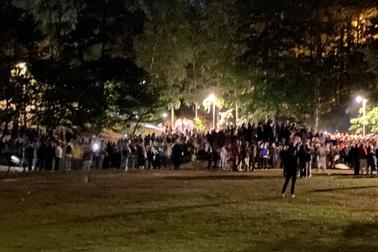
The discussion included an overview of the various actors’ viewpoints on the manifestations of youth distress and increasing juvenile delinquency, as well as how different actors can work together more effectively to prevent these problems. Multidisciplinary cooperation can still be an effective way to tackle the growing incidence of youth distress and juvenile delinquency in Finland and Helsinki.
Today’s discussion focused on closer cooperation and the need to continue the meetings. Further measures to prevent marginalisation and criminality among young people were also discussed. Among other measures, the participants considered it important to strengthen the inclusion of young people and their families and to identify and help high-risk youth at a sufficiently early stage. In addition, they seek to step up intervention in the case of runaways, i.e. young people who run away from their homes or institutional settings; improve the reintegration of young adults who are returning migrants; and facilitate young people’s access to psychiatric services.
Efforts will be made to involve the fourth sector, or families, to a greater extent at the very first signs of problems affecting their children’s lives. The intergenerational experience of social exclusion must be broken to reduce the influence of gangs on young people, for example. In terms of people with immigrant backgrounds, it is also important to this work to strengthen services in the language of the young person’s family and to ensure that professionals working with these families have an adequate understanding of their cultural background.
“We must work to break the cycle of distress and criminality among young people as early as possible and on all fronts. In addition to the police, the city needs the help of all agencies and organisations working with young people. We have indeed been working closely together for many years. Neither should we forget the role of parents, guardians and other adults who are close to the young person, as the most effective prevention often starts with the family and providing support to families. This is why we are working even harder to actively involve families in this cooperation, and we must also support parents and guardians in their parenting and upbringing efforts,” Mayor Vartiainen says.
The discussion on 1st of November was attended by representatives from the Helsinki Police Department, the Criminal Sanctions Agency, Aseman Lapset ry, the Mannerheim League for Child Welfare, Save the Children Finland, the Helsinki Deaconess Institute, Icehearts Finland, the Kide foundation, the Evangelical Lutheran Diocese of Helsinki, the Evangelical Lutheran Church of Finland, HelsinkiMissio and the Finnish Muslim Forum. Also present were the executive directors of the City of Helsinki’s Education Division, Culture and Leisure Division, Social Services, Health Care and Rescue Services Division, and many other city representatives.
The city works extensively to prevent problems
For the city, daycare centres and schools, youth work, and social and health services, in particular, play a significant role in ensuring the well-being, inclusion and safety of the city’s youth. In future, the city aims to tackle problems affecting young adolescents more effectively than before, as well as employ new operating models in regional multidisciplinary work based on international examples.
The following are some examples of measures aimed at improving the situation for young people experiencing problems:
• Developing and implementing rules for safer communities across schools, educational institutions and youth centres will include children and youth and commit them to behaving appropriately and acting responsibly towards each other.
• All comprehensive schools will systematically teach emotional and interpersonal skills and intervene in school absences, bullying and harassment according to jointly agreed operating models (SKY-project).
• An operating model is in place for intervening in hate speech, and city personnel working with children and youth are extensively trained in defusing confrontations and conflicts.
• Inclusion will be strengthened by offering free leisure activities to young people, following the Finnish Model for Leisure Activities.
• Measures supporting integration will help prevent gang affiliation.
• Helsinki’s youth work is currently developing operating models to address violent situations together with the municipalities in the Helsinki Metropolitan Area. The development work will also draw on the experience and expertise of Nordic peer cities.
• Child welfare’s youth services have been strengthened this year, and this work will continue over the next year.
• The number of Toivo (Hope) teams working with the police and organisations will be increased.
• The city will launch a new outreach and intensive support team for young people and families with immigrant backgrounds in East and North Helsinki.
• Children’s outreach work is carried out in the city in the evenings and at weekends, which aims to guide young adolescents, in particular, to support services.


